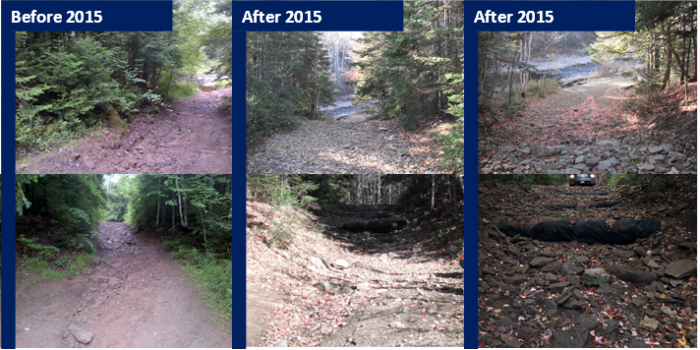The concept of stream restoration refers to returning degraded ecosystems to a stable, healthy condition. Rivers are easily impacted by surrounding factors whether it’s land management, industrial, residential, agricultural, transportation and creational. The negative impact often involves river bank erosion and sedimentation.
Southeastern Anglers Association wants to help lower that impact by restoring and stabilizing eroded river banks. This task requires expertise in a number of disciplines: planning, funding sources, developing designs, working with landowner and stakeholders, consulting with professionals, habitat surveying and applying appropriate restoration techniques. A key focus of these projects is to restore the river habitats that ensure good resources and to maximize the long-term efficacy of the restoration efforts.

South Branch, Bouctouche Watershed – Tree planting
Restoration techniques are based on recommendations by Department of Fisheries and Oceans and professionals. Planting vegetation such as seedlings, trees and/or shrubs is a very popular method of erosion control. The root systems of vegetation help re-stabilize eroding river banks. Other fish habitat restoration methods used to stabilize river banks are fascines and deflectors. These structures are placed in areas where river banks need more stability. They need to be properly place to keep the natural meander pattern of the river without causing future damage. They help accentuate the natural stream flow, keeping downstream waters clean of excessive sediment deposits. Many techniques exist for different erosion or sedimentation control. Southeastern Anglers Association strives for success in restoration efforts to help improve the water quality and create a healthier fish habitat favoring, for example, Atlantic salmon and Brook trout productivity.

South Branch, Bouctouche Watershed – Filter bed for sediment